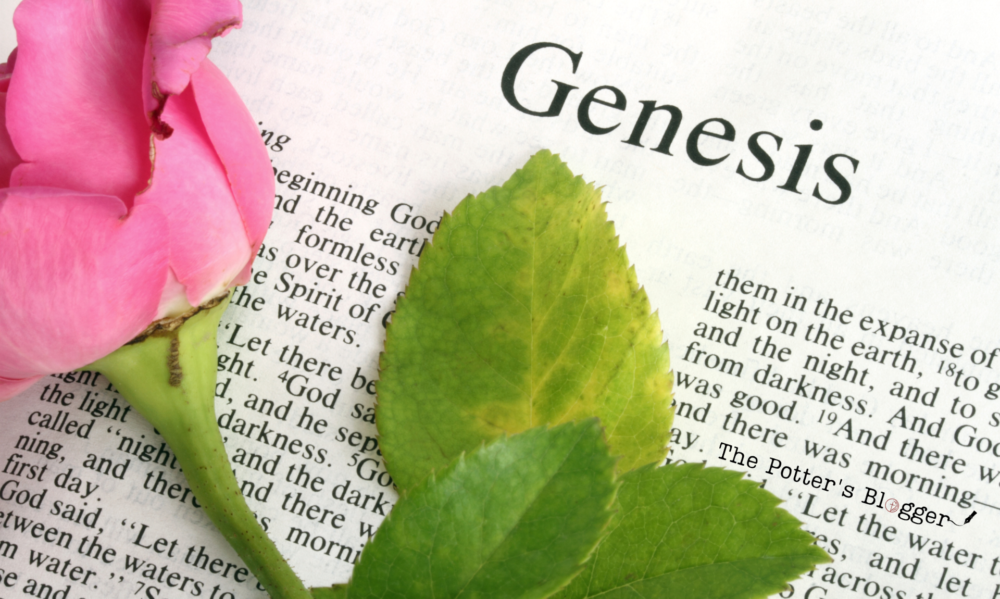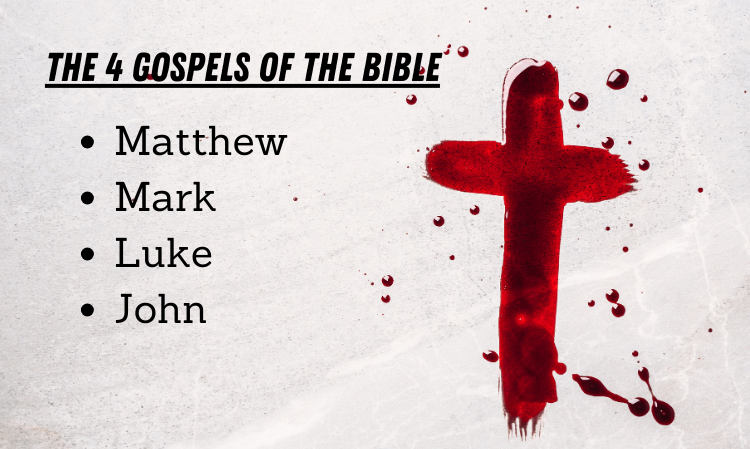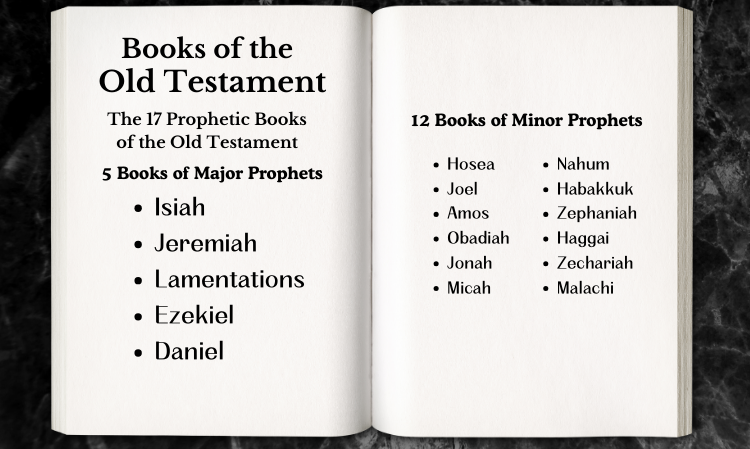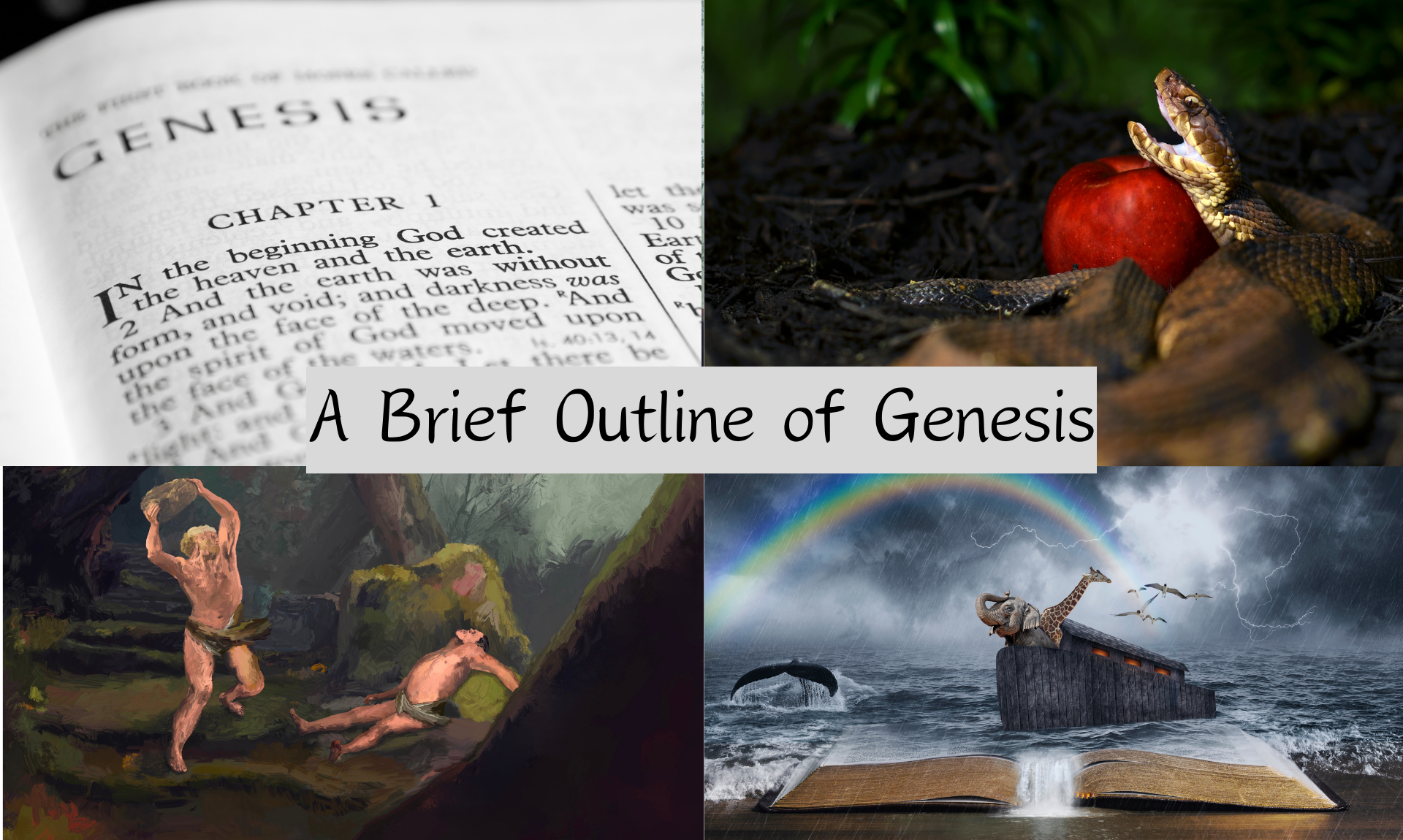
Genesis: The First Book of the Old Testament
Author: Moses
Written: 1450 BC – 1400 BC
Number of Chapters: 50
Genesis: From the Greek, Meaning “Beginning”
I. The History of the World
- The Creation (Chapters 1-2)
- The Fall of Mankind (Chapter 3)
- Cain & Abel (Chapters 4-5)
- The Flood (Chapters 6-9)
- Noah’s Descendants (Chapters 10-11)
II. The Patriarchs
- Abraham (Chapters 12 – 25:11)
- Isaac (Chapters 25:12 – 28:9)
- Jacob & Esau (Chapters 28:10 – 36:43)
- Joseph (Chapters 37-50)
“In the beginning God created the heavens and the earth.”
Genesis 1:1
The Creation (Chapters 1-2)
God’s 7 Days of Creation:
- Day 1: Light (Day) and Darkness (Night).
- Day 2: Firmament of Open Sky
- Day 3: Dry Ground, Plants and Trees
- Day 4: Two Great Lights – Sun, Moon and Stars
- Day 5: Creatures of the Sea and Birds of the Air
- Day 6: Land Animals and Man in His Own Image
- Day 7: God Rested
But… the splendor and the mystery of Creation goes even deeper. For, when we get to the Gospel of John, he reveals the sacred mystery of Creation when proclaiming:
“In the beginning was the Word, and the Word was with God, and the Word was God. He was with God in the beginning. Through him all things were made; without Him nothing was made that has been made.” (John 1:1-3)
“And God Said…”
The author of Genesis is very quick to tell the world whom it was that created the earth, when proclaiming, “In the beginning ‘God…'”
However, not only did God create the heavens and the earth, but He did so in a most unimaginable way, when “God said…”
- 1
Genesis 1:3 – And God said, “Let there be light,” and there was light.
- 2
Genesis 1:6 – And God said, “Let there be a vault between the waters to separate water from water.”
- 3
Genesis 1:9 – And God said, “Let the water under the sky be gathered to one place, and let dry ground appear.”
- 4
Genesis 1:11 – Then God said, “Let the land produce vegetation; seed-bearing plants and trees on the land that bear fruit with seed in it, according to their various kinds.”
- 5
Genesis 1:14-15 – (14) And God said, “Let there be lights in the vault of the sky to separate the day from the night, and let them serve as signs to mark sacred times, and days and years, (15) and let them be lights in the vault of the sky to give light on the earth.”
- 6
Genesis 1:20 – And God said, “Let the water teem with living creatures, and let birds fly above the earth across the vault of the sky.”
- 7
Genesis 1:24 – And God said, “Let the land produce living creatures according to their kinds: the livestock, the creatures that move along the ground, and the wild animals, each according to its kind.”
- 8
Genesis 1:26 – Then God said, “Let us make mankind in our image, in our likeness, so that they may rule over the fish in the sea and the birds in the sky, over the livestock and all the wild animals, and over all the creatures that move along the ground.”
The Fall of Mankind (Chapter 3)
God created Man from the dust of the earth; giving him the name, Adam. God then gave him a beautiful place to live. Seeing that Adam was alone, God then put him into a deep sleep, removed one of his ribs, and created from it, Woman. Her name was Eve.
Adam and Eve lived in the beautiful Garden of Eden, where God commanded, “You are free to eat from any tree in the garden; but you must not eat from the tree of the knowledge of good and evil, for when you eat from it you will certainly die.” (Genesis 2:26-27 NIV Bible Translation)
Being tempted by the serpent (Satan), Adam and Eve did eat from the tree of the knowledge of good and evil, allowing for sin to enter into the world.

Penalties of Sin, and First Prophesy of Jesus
Penalty for Serpent: (Genesis 3:14-15 NIV Bible Translation)
- God said, “Cursed are you above all livestock and all wild animals! You will crawl on your belly and you will eat dust all the days of your life. And I will put enmity between you and the woman, and between your offspring and hers; he will crush your head, and you will strike his heel.”
Note: Jesus the Messiah is the Woman’s Offspring who will crush the head of the serpent (Satan). Genesis 3:15 is the first Old Testament Prophecy of the Messiah.
Penalty for Woman: (Genesis 3:16 NIV Bible Translation)
- God said, “I will make your pains in childbearing very severe; with painful labor you will give birth to children. Your desire will be for your husband, and he will rule over you.”
Penalty for Man: (Genesis 3:17-19 NIV Bible Translation)
- God said, “Because you listened to your wife and ate fruit from the tree about which I commanded you, ‘You must not eat from it,’ Cursed is the ground because of you; through painful toil you will eat food from it all the days of your life. It will produce thorns and thistles for you, and you will eat the plants of the field. By the sweat of your brow you will eat your food until you return to the ground, since from it you were taken; for dust you are and to dust you will return.”
Cain and Abel (Chapters 4-5)
Adam and Eve have two sons – Cain and Abel.
Because sin has entered into Mankind, through jealousy, Cain chooses to murder his brother Abel.
However, Adam and Eve are granted yet another son by God. They name him Seth. And from this time, we see two distinct lines of descendants; a Godly line of descendants from Seth and a Godless line of descendants from Cain.
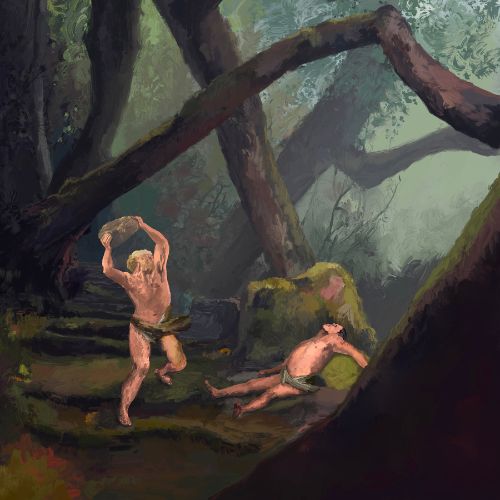
Godly Line of Seth
- Adam
- Seth
- Enosh
- Kenan
- Mahalalel
- Jared
- Enoch
- Methuselah
- Lamech
- Noah
Godless Line of Cain
- Adam
- Cain
- Enoch
- Irad
- Mehujael
- Methushael
- Lamech
- Jabal, Jubal, Tubal-Cain
Noah’s Ark and The Flood (Chapters 6 – 9)
Because sin and lawlessness was running rampant, God warns Noah that He is going to destroy all life on earth. God then commands Noah to build an ark.
Facts about the Ark and Flood:
- Made of Cypress Wood – Gopher Wood in the Hebrew text.
- Approximately One and a Half Million Cubic Feet.
- Flood Occurred 120 Years after God’s Warning to Noah.
- 7 of Each Clean Animal, and 2 of Each Unclean Animal Would Enter the Ark.
- 2 Sources of Flood Waters: the Seas and Rain from the Heavens.
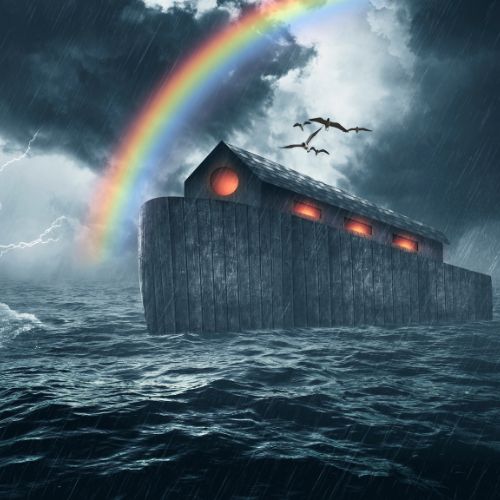
Timeline of Events During the Flood
From (Wilbur Fields, Old Testament History – An Overview of Sacred History & Truth, p. 55)
- 7 Days: Noah, his family and the animals were in the Ark for 7 days before the flood waters came
- 40 Days: Beginning on the 17th day of the 2nd month, rain began falling for 40 days
- 110 Days: The flood waters continued for an additional 110 days
- 74 Days: On the 1st day of the 10th month (74 days after the flood waters ceased) the Ark rested upon Mount Ararat
- 40 Days: The raven was sent out on the 40 day interval
- 7 Days: The dove was sent out 7 days later
- 7 Days: The dove was sent out again 7 days later
- 7 Days: The dove was sent out again 7 days later, but did not return
- 29 Days: After the dove did not return, it was an additional 29 days before the ground dried
- 57 Days: On the 27th day of the 2nd month, they departed from the Ark 57 days after the land had dried
- 378 Days: Noah, his family, and the animals were on the Ark for a total of 378 days (1 Year and 13 Days)
Noah’s Descendants (Chapters 10 – 11)
Noah’s 3 Sons – Shem, Ham and Japheth
Shem’s Children:
- Elam
- Asshur
- Arphaxad
- Lud
- Aram
Ham’s Children:
- Cush
- Mizraim
- Put
- Canaan
Japheth’s Children:
- Gomer
- Magog
- Madai
- Javan
- Tubal
- Meshech
- Tiras
The Patriarchs (Chapters 12 – 50)
The Patriarchs will have their own individual outlines posted in the near future.
The Patriarchs
- Abraham (Chapters 12 – 25:11)
- Isaac (Chapters 25:12 – 28:9)
- Jacob & Esau (Chapters 28:10 – 36:43)
- Joseph (Chapters 37-50)

